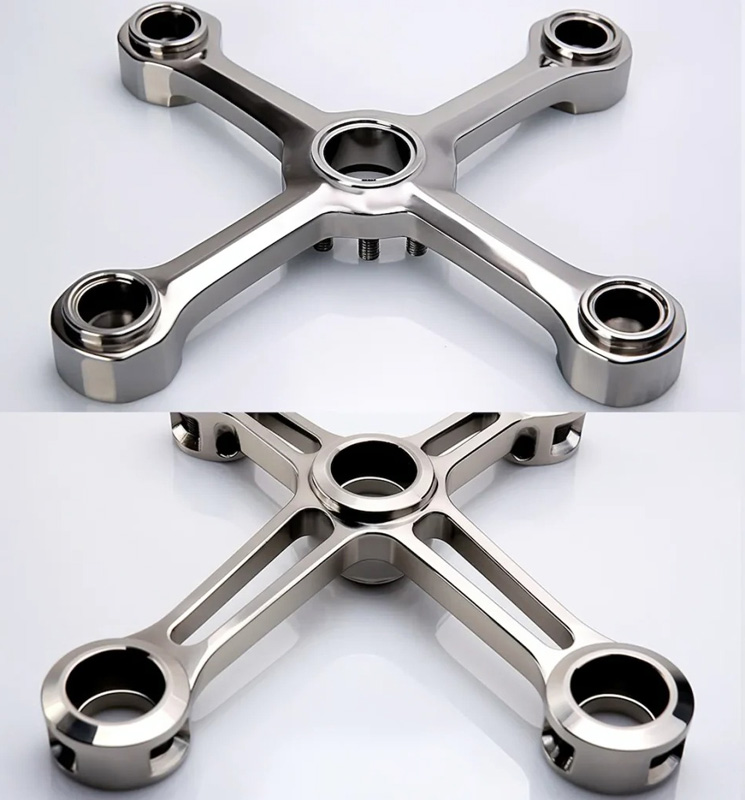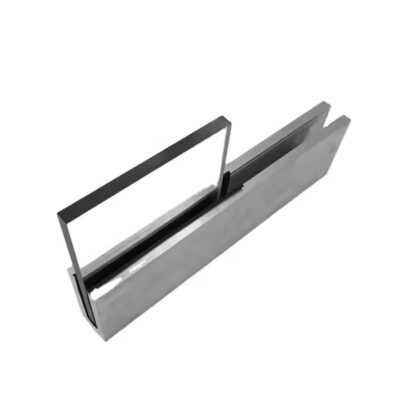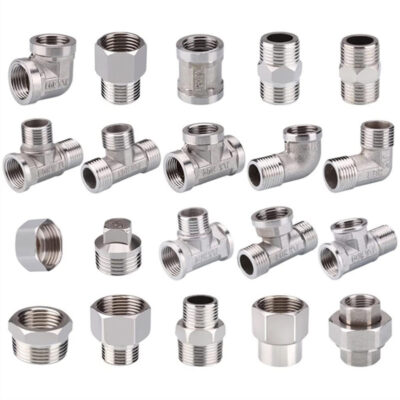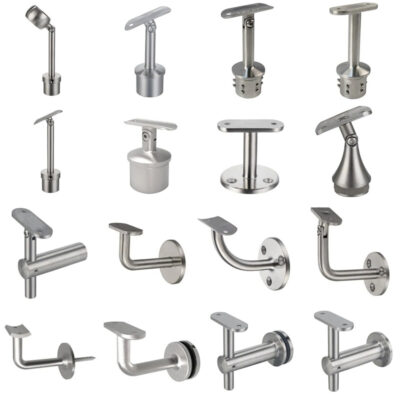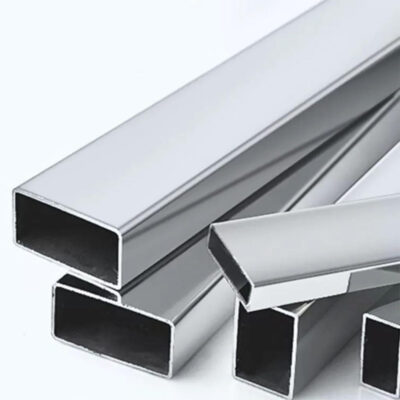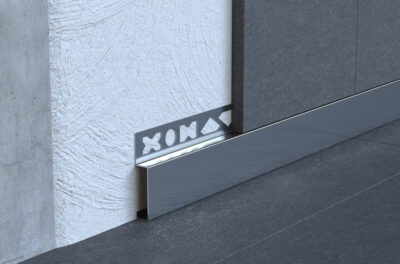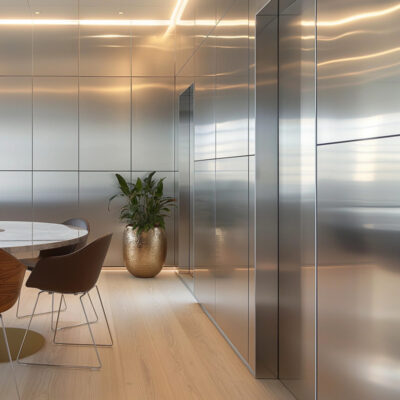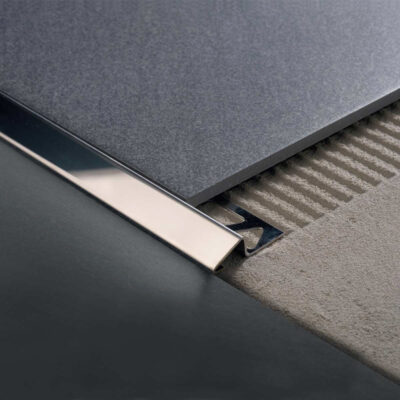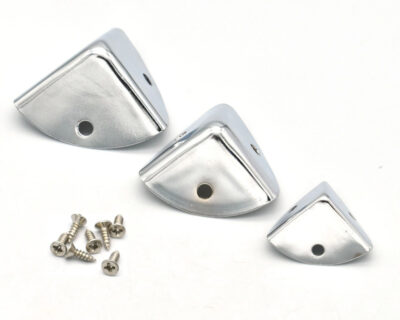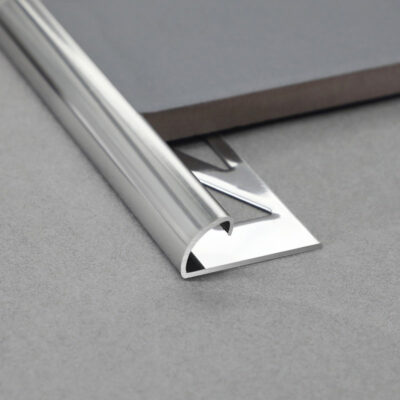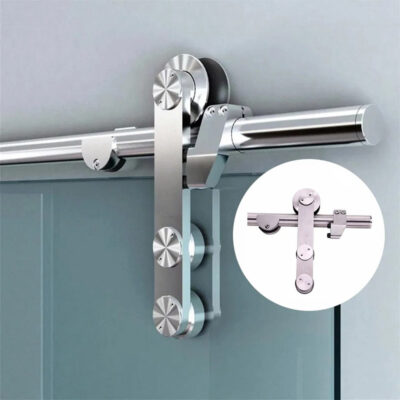The Complete Guide to Stainless Steel Spider Fittings in Modern Architecture
The gleaming glass façades that define contemporary architecture rarely stand alone. Behind these transparent walls lies an intricate system of components working in harmony to create both beauty and structural integrity. During a recent renovation project in Singapore, I witnessed firsthand how a seemingly small component—a stainless steel spider fitting—completely transformed the building’s appearance while solving complex structural challenges the design team had been grappling with for months.
Stainless steel spider fittings represent the perfect marriage of form and function in modern construction. These specialized hardware components allow architects and designers to create stunning glass structures with minimal visual interruption. The evolution of these fittings has fundamentally changed how we approach transparency in architecture, enabling increasingly ambitious designs that would have been structurally impossible just decades ago.
What makes these components particularly fascinating is their ability to distribute load forces while maintaining the clean, unobstructed views that define contemporary spaces. While they might appear small and unassuming, spider fittings bear tremendous responsibility in the structural narrative of glass-dominated buildings.
E-Sang has been pioneering innovations in this field, consistently pushing boundaries to develop fittings that balance structural demands with aesthetic considerations. Their approach exemplifies how thoughtful engineering can elevate architectural possibilities.
Technical Specifications and Material Considerations
Stainless steel spider fittings come in various grades and compositions, each offering specific benefits depending on the application requirements. The most commonly used grades include 304, which provides excellent corrosion resistance for most environments, and 316, which contains molybdenum for enhanced protection in coastal or high-pollution areas. For particularly demanding applications, duplex stainless steels (such as 2205) offer superior strength and corrosion resistance.
The composition of these fittings directly influences their performance characteristics:
| Stainless Steel Grade | Corrosion Resistance | Relative Strength | Typical Applications | Cost Factor |
|---|---|---|---|---|
| 304 (18/8) | Good resistance to general environments | Moderate | Indoor applications, standard urban environments | 1.0x (baseline) |
| 316 | Superior resistance to chlorides and acids | Moderate-High | Coastal areas, industrial environments, swimming pools | 1.2-1.5x |
| 316L | Excellent resistance to chemical processing environments | Moderate | Chemical processing facilities, laboratories | 1.3-1.6x |
| Duplex 2205 | Exceptional resistance in aggressive environments | Very High | High-load structures, extreme environments | 1.8-2.2x |
The load-bearing capacity of spider fittings varies significantly based on their design and connection type. Standard four-arm configurations typically support between 2.5kN to 4kN per fitting point, while engineered solutions can achieve capacities exceeding 10kN. These values must be carefully considered alongside factors like glass thickness, panel dimensions, and environmental conditions.
During my consultation with Dr. Elina Korhonen, a structural engineer specializing in glass systems, she emphasized that “the selection of appropriate spider fitting specifications should never be based solely on aesthetic preferences. The structural calculations must account for dynamic loads, particularly in regions prone to high winds or seismic activity.”
The arms of spider fittings typically range from two to six in number, though four-arm configurations are most common. The arm length directly influences the distribution of forces and the overall aesthetic effect. Shorter arms create a more compact appearance but concentrate stress more intensely, while longer arms distribute forces more evenly but increase the visual footprint of the hardware.
One often overlooked aspect is the compatibility between spider fittings and different glass types. Tempered glass is standard, but laminated, heat-strengthened, and specialized performance glasses require careful consideration regarding connection methods and pressure distribution. The thickness of glass panels—typically ranging from 8mm to 25mm—must be precisely matched to appropriate fitting types to ensure structural integrity.
The connection between glass and fitting typically employs one of three methods: countersunk bolts for a flush finish, patch fittings for enhanced strength, or articulated connections that accommodate thermal movement. Each method presents different aesthetic outcomes and installation challenges that must be carefully weighed against project requirements.
Something I’ve noticed in recent years is the increasing demand for customized finishes beyond the standard polished or brushed stainless steel. Architectural teams are now specifying PVD coatings in bronze, gold, and even black to complement specific design schemes. These finishes must maintain the corrosion resistance inherent to the base material while providing the desired visual effect.
Installation Processes and Technical Challenges
Installing stainless steel spider fittings demands precision, specialized knowledge, and meticulous attention to detail. The process is far more complex than simply attaching hardware to glass—it requires careful coordination among multiple trades and a deep understanding of structural principles.
The typical installation sequence follows several critical stages:
First comes the preparation of the supporting structure, whether a tensile cable system, structural glass fin, or rigid framework. During a recent project in Dubai, I observed how crucial this initial alignment is—a discrepancy of just a few millimeters in the supporting structure created cascading complications throughout the entire façade. The team spent nearly three additional days adjusting the primary structure before proceeding with the glass installation.
Once the supporting structure is verified, temporary supports must be installed to hold glass panels during positioning. This often presents logistical challenges, particularly in high-rise applications or when working with oversized glass elements. The temporary supports must be robust enough to secure the panels safely while allowing sufficient adjustment capability.
The precise drilling of glass panels represents perhaps the most critical phase. Each hole must align perfectly with the spider fitting arms while maintaining specified edge distances to prevent stress concentration. Modern fabrication typically employs CNC technology for this purpose, achieving tolerances to within ±0.5mm. However, as Michael Zhang, a veteran glazing specialist with over 25 years of experience, told me, “Even with today’s precision manufacturing, field verification remains essential. We still measure each panel and fitting location independently before assembly.”
The actual connection between glass and fitting requires careful management of compression forces. Overtightening can induce stress fractures, while insufficient tightening compromises structural integrity. Many systems now incorporate specialized torque-limiting tools and EPDM or silicone gaskets to distribute pressure evenly around connection points.
| Installation Stage | Common Challenges | Best Practices | Specialized Tools Required |
|---|---|---|---|
| Supporting Structure Preparation | Alignment discrepancies, uneven surfaces | Use laser alignment tools, verify dimensions before proceeding | Laser levels, digital inclinometers, precision measuring equipment |
| Glass Panel Preparation | Edge chipping, hole alignment issues | Utilize CNC processing, maintain minimum edge distances (typically 2x glass thickness) | Diamond core drills, hole gauges, edge treatment equipment |
| Temporary Support | Panel stability, worker safety | Install robust temporary restraints, use suction lifters | Vacuum lifting equipment, adjustable temporary bracing |
| Connection Assembly | Over-torquing, uneven pressure distribution | Use calibrated torque tools, install gaskets properly | Torque wrenches, specialized assembly jigs |
| Final Adjustment | Achieving specified tolerances, glass alignment | Incremental adjustments, systematic verification | Feeler gauges, adjustment spanners |
The installation of spider fittings poses several notable safety considerations. Beyond standard fall protection measures, teams must contend with the handling of heavy, fragile glass elements. A single 12mm tempered panel measuring 2m by 3m can weigh well over 200kg, requiring specialized lifting equipment and careful coordination among installation teams.
Weather conditions significantly impact installation processes. Wind speeds exceeding 25km/h typically halt installation activities due to the sail effect on glass panels. Similarly, temperature extremes affect material expansion rates, potentially altering critical tolerances during installation. I’ve experienced firsthand how a temperature difference of just 15°C between morning and afternoon required continuous recalibration of connection points during a summer installation in Madrid.
One frequent challenge involves the management of thermal expansion. Glass and stainless steel expand and contract at different rates, necessitating articulated connections that accommodate movement without inducing stress. Modern systems employ spherical bearings, sliding connections, or flexible gaskets to address this challenge, though implementing these solutions often requires additional installation steps and verification procedures.
Applications Across Various Architectural Contexts
Stainless steel spider fittings have transformed architectural possibilities across a remarkable range of building types and styles. Their versatility extends from soaring commercial atriums to intimate residential spaces, each application showcasing different aspects of their functional and aesthetic capabilities.
In commercial office environments, these fittings have redefined entrance experiences. The headquarters of a major technology firm in Helsinki features a three-story glass atrium supported entirely by spider fittings and tensile cables. What struck me during my visit wasn’t just the technical achievement but how the minimal hardware created an almost ethereal quality of light that transformed throughout the day. The building’s architect later explained this was intentional—the transparency created a psychological connection between indoor and outdoor environments that traditional curtain wall systems couldn’t achieve.
Museum and cultural institutions have embraced spider fittings to create display environments that seem to disappear around priceless artifacts. The recent expansion of the National Gallery in Singapore employs a spider fitting system that allows natural light to illuminate centuries-old artifacts without the visual intrusion of heavy framing systems. The conservation team specifically requested the stainless steel components for their non-reactive properties, ensuring no chemical interaction with sensitive exhibition materials.
Perhaps most technically impressive are applications in seismic zones. A conference center in Tokyo utilizes specially engineered spider systems with articulated connections that allow for significant movement during seismic events while maintaining structural integrity. The system includes displacement capacity of up to 50mm in any direction without compromising the glass panels—an engineering achievement that requires precisely calibrated fitting components.
Historic renovation projects present unique challenges where spider fittings offer elegant solutions. During the restoration of a 19th-century market hall in Barcelona, architects faced the challenge of maintaining the building’s heritage character while creating modern functionality. The solution involved suspending new glass elements within the original iron framework using custom spider fittings with an aged bronze finish. The contrast between historic structure and modern glass created a dialogue between periods that conventional systems would have obscured.
Residential applications have grown significantly in recent years, particularly in high-end properties where uninterrupted views command premium prices. A cliffside residence in New Zealand features a glass pavilion dining area supported by minimalist spider fittings, creating the impression that the space floats above the Pacific Ocean. The homeowner specifically mentioned that the unobstructed 270-degree views would have been impossible with traditional framing systems.
Transportation facilities increasingly utilize these systems to manage large crowds while maintaining visibility. The recently renovated central railway station in Milan incorporates massive glass partitions supported by spider fittings that serve multiple functions: they create acoustic separation between platform and concourse areas while allowing natural light penetration and maintaining clear sightlines for security purposes.
Among the most challenging applications are underwater viewing panels in aquariums and swimming pools. These specialized systems require extraordinarily high-grade stainless steel (typically 316L or higher) and precision engineering to withstand constant water exposure and substantial hydrostatic pressure. The maintenance staff at a major European aquarium told me their spider-supported viewing panels have performed flawlessly for over a decade despite continuous saltwater exposure—a testament to both the material quality and engineering precision.
Maintenance Requirements and Long-Term Performance
The longevity and performance of stainless steel spider fittings depend significantly on appropriate maintenance protocols and environmental conditions. Despite their reputation for durability, these components require systematic care to maintain both aesthetic appearance and structural integrity over their expected 25-50 year lifespan.
Routine inspection represents the cornerstone of any maintenance program. During my conversation with Elena Petrova, a facades maintenance specialist, she emphasized that “visual inspections should occur quarterly at minimum, with particular attention to connection points and signs of material stress.” She recommends maintaining detailed inspection logs that track even minor changes in appearance or performance, allowing maintenance teams to identify developing issues before they become critical.
The cleaning regimen for stainless steel components depends heavily on environmental exposure:
| Environment Type | Cleaning Frequency | Recommended Cleaning Method | Special Considerations |
|---|---|---|---|
| Urban/Standard | 3-6 months | Warm water with mild detergent, soft cloth application | Avoid abrasive materials that can scratch surfaces |
| Coastal/Marine | 1-3 months | Specialized stainless steel cleaner, thorough rinsing | Pay special attention to crevices where salt deposits may accumulate |
| Industrial/Polluted | 1-2 months | Professional cleaning with pH-neutral solutions | May require protective treatments to prevent accelerated corrosion |
| Indoor/Controlled | 6-12 months | Simple dusting, occasional damp cleaning | Monitor for finger marks and condensation points |
One maintenance challenge frequently overlooked involves the glass-metal interface. The gaskets and cushioning materials that prevent direct contact between glass and metal typically have a shorter lifespan than the primary components. These elements should be inspected for hardening, compression set, or degradation annually, with replacement generally recommended every 7-10 years depending on environmental exposure.
During a renovation project in Hong Kong, I encountered spider fittings that had been installed for nearly 15 years without gasket replacement. The EPDM components had hardened completely, transferring metal-to-glass contact stress that eventually led to edge chipping and potential structural compromise. The building management had followed cleaning protocols diligently but overlooked this critical maintenance aspect.
Corrosion issues, while rare with proper specification, can occur in particularly aggressive environments. Stress corrosion cracking represents a particular concern in coastal areas with high chloride concentrations. Specialized protective treatments like electro-polishing or additional passive layer enhancement can significantly improve resistance in these conditions. Annual testing of material surfaces in high-risk environments can help identify microscopic corrosion initiation before visible damage occurs.
Fastener integrity requires systematic verification, particularly in applications subject to vibration or movement. Recommended practice includes torque verification of accessible connections at 2-5 year intervals, with more frequent checks in seismic zones or near transportation corridors. One building manager in Singapore implemented an innovative monitoring system using colored torque indicators that provide visual confirmation of connection status during routine inspections.
Weather sealing around spider fitting penetrations demands particular attention in exterior applications. The interface between fitting and weatherproofing elements creates potential water ingress points that can deteriorate over time. Thermal imaging during or after precipitation can help identify developing issues before water damage becomes apparent.
An emerging best practice involves digital documentation of maintenance history for each fitting, including installation date, maintenance interventions, and inspection records. Several facility managers I’ve worked with have implemented QR-coded tags on structural elements that provide immediate access to component-specific maintenance histories and specifications via mobile devices.
The replacement of individual components rather than entire systems often makes economic sense, but requires careful planning. Standardized fitting designs facilitate long-term maintenance by ensuring replacement parts remain available throughout the system’s lifespan. When specifying custom designs, architects should consider requiring manufacturers to maintain replacement component availability for a minimum of 20 years.
Recent Innovations and Future Directions
The field of stainless steel spider fittings continues to evolve rapidly, with several notable innovations emerging in recent years that promise to reshape architectural possibilities and performance standards. These developments respond to increasing demands for aesthetics, sustainability, and enhanced functionality in contemporary building envelopes.
Perhaps the most significant advancement involves the integration of adjustable connection systems that accommodate building movement without compromising structural integrity. Traditional spider fittings required precise installation tolerances that left minimal allowance for settling or thermal expansion. Contemporary systems incorporate micro-adjustment capabilities that permit millimeter-precise alignment during installation and readjustment during the building’s lifespan. During a renovation of a mid-century office tower in Chicago, this technology proved invaluable when unexpected structural movement required recalibration of the entire façade system.
Material science has dramatically influenced recent developments. New alloy formulations push the boundaries of what’s possible with stainless steel components. Researchers at the Materials Institute in Zurich have developed high-nitrogen stainless steel variants that offer nearly double the strength of traditional formulations while maintaining comparable corrosion resistance. This breakthrough enables significantly reduced fitting dimensions without compromising structural performance—a development eagerly anticipated by architects seeking ever-greater transparency.
Dr. Hiroshi Tanaka, a metallurgist specializing in architectural applications, explains: “The development of precipitation-hardened stainless steels specifically formulated for structural applications represents a significant advancement. These materials offer yield strengths approaching 1000 MPa compared to the 200-300 MPa typical of conventional grades, allowing substantial reduction in component dimensions while maintaining safety factors.”
Digital manufacturing technologies have revolutionized both design possibilities and production precision. Advanced 5-axis CNC machining enables complex geometries previously impossible with traditional manufacturing methods. This capability has given rise to biomimetic spider fitting designs that distribute forces more efficiently through organic forms inspired by natural structures. I recently toured a manufacturing facility where topology optimization software generated fitting designs that reduced material usage by 27% while increasing load capacity by 15% compared to conventional geometries.
Sustainability considerations are increasingly driving innovation in this field. Life-cycle assessment studies conducted by the European Building Council indicate that while stainless steel components have relatively high embodied energy, their exceptional durability and recyclability result in favorable long-term environmental performance. Manufacturers are responding with spider fitting designs specifically optimized for eventual disassembly and material recovery, facilitating future circular economy models.
Integration with smart building systems represents another frontier. Prototype installations in several European projects now incorporate sensors within or adjacent to spider fitting connection points, monitoring structural performance, movement, and load distribution in real-time. This data feeds into building management systems, providing early warning of potential issues and informing predictive maintenance protocols. A building manager in Rotterdam demonstrated how this technology had alerted maintenance teams to excessive stress patterns following an unusually strong windstorm, potentially preventing component failure.
The aesthetic evolution continues as well, with new surface treatment technologies expanding design possibilities. Physical vapor deposition (PVD) coatings now enable previously impossible color variations without compromising corrosion resistance. A recent museum project in Seoul features spider fittings with a dichroic surface treatment that shifts color depending on viewing angle and lighting conditions, creating a dynamic visual experience that complements the exhibited artwork.
Thermal performance represents an ongoing challenge. Traditional spider fittings create thermal bridges that can compromise energy efficiency and create condensation risks in certain climates. New thermally-broken designs incorporate non-conductive elements that significantly reduce heat transfer while maintaining structural integrity. Early performance data from installations in Scandinavian projects indicates energy consumption reductions of 4-7% compared to conventional systems.
Looking forward, several emerging technologies show particular promise. Composite materials combining stainless steel with carbon fiber or fiberglass elements offer potential weight reductions while maintaining structural performance. Additive manufacturing (3D printing) of stainless steel components has progressed from experimental to production-ready for certain applications, enabling highly customized designs with minimal material waste.
Comparative Analysis with Alternative Systems
Selecting the appropriate glass support system involves weighing numerous factors beyond aesthetics alone. Stainless steel spider fittings represent one approach among several competing technologies, each offering distinct advantages and limitations depending on project requirements and constraints.
Traditional curtain wall systems remain the most common alternative, particularly for large-scale commercial projects. These aluminum-framed systems offer well-established performance characteristics and relatively straightforward installation processes. However, they impose significant visual interruption compared to point-supported systems. A direct comparison reveals the fundamental tradeoff: curtain walls typically cost 15-25% less initially than spider fitting systems but provide substantially less visual transparency and design flexibility.
Structural silicone glazing (SSG) represents another important alternative that eliminates external hardware by bonding glass to an internal frame with specialized adhesives. This approach creates clean exterior surfaces but requires precise manufacturing conditions and curing times that extend installation schedules. During a museum project in Barcelona, the design team ultimately selected spider fittings over SSG specifically because the mechanical connection provided greater long-term confidence than adhesive bonds in the marine environment.
The following table compares key performance aspects across major system types:
| Performance Aspect | Stainless Steel Spider Fittings | Curtain Wall Systems | Structural Silicone Glazing | Embedded Glass Channel Systems |
|---|---|---|---|---|
| Visual Transparency | Excellent (90-95% unobstructed) | Moderate (70-80% unobstructed) | Very Good (85-90% unobstructed) | Good (80-85% unobstructed) |
| Structural Performance | High (point loads) | High (distributed loads) | Moderate to High | Moderate |
| Thermal Performance | Fair (thermal bridging concerns) | Very Good (thermally broken) | Excellent (minimal bridging) | Good |
| Weather Resistance | Good (requires precise sealing) | Excellent (established systems) | Very Good (seamless exterior) | Good (depends on detailing) |
| Cost Range (per m²) | $800-1,500 | $600-1,200 | $700-1,300 | $750-1,400 |
| Installation Complexity | High (specialized expertise) | Moderate (established methods) | High (precise application) | Moderate to High |
| Maintenance Requirements | Moderate | Low to Moderate | Low | Moderate |
From a structural engineering perspective, spider fittings transfer loads differently than framed systems. While curtain walls distribute forces relatively evenly across continuous framing members, spider systems concentrate loads at specific points. This concentration requires more intensive structural analysis but can actually provide advantages in certain applications. As structural engineer Robert Feldman explains, “Point-supported systems can more efficiently accommodate building movement, particularly in seismic zones, as they allow for more precise engineering of movement capabilities at specific connection points.”
The weatherproofing approach differs significantly between systems. Spider fittings require careful detailing around each penetration point, typically utilizing specialized gaskets and sealants. By contrast, curtain wall systems employ continuous gasketing with overlapping drainage planes. During extreme weather testing at a certification laboratory in Florida, I observed how different systems performed under hurricane-force conditions. The spider system maintained integrity throughout testing but required substantially more precise installation to achieve these results.
Thermal performance represents perhaps the most significant technical challenge for spider fittings. The metal components inherently create thermal bridges that can compromise energy efficiency and create condensation risk in cold climates. Modern systems address this through thermal breaks and insulating elements, but typically cannot match the thermal efficiency of advanced curtain wall systems with deep thermal breaks. Energy modeling for a recent project in Toronto indicated approximately 7% higher heating costs for the spider fitting façade compared to a premium thermally-broken curtain wall system.
Installation timelines and expertise requirements vary substantially between systems. Spider fitting installations typically require more specialized labor and precise adjustment, often extending installation schedules by 15-30% compared to conventional systems. However, they generally require less perimeter structural support, potentially reducing overall construction complexity in certain applications.
Maintenance considerations over the building lifecycle reveal interesting tradeoffs. While spider fittings require more regular inspection of connection points, their modular nature allows for component-by-component replacement when necessary. By contrast, curtain wall failures typically require more extensive intervention. The facilities manager of a 30-year-old commercial building in Singapore noted that their spider fitting system had actually proved more economical to maintain over time despite higher initial maintenance requirements, as problems could be addressed incrementally rather than requiring wholesale replacement.
Acoustical performance presents another important consideration. Point-supported systems typically provide less sound attenuation than framed approaches, with testing indicating a 3-5 dB reduction in sound transmission class (STC) compared to premium curtain wall systems. This difference becomes particularly relevant in noise-sensitive applications like recording studios or urban residential developments.
Making Informed Choices for Your Project
The selection of appropriate glass support systems ultimately requires balancing numerous factors specific to each project’s unique requirements. Throughout this exploration of stainless steel spider fittings, we’ve examined various aspects that influence this decision-making process—from technical specifications to aesthetic considerations, installation complexities to maintenance demands.
When evaluating whether spider fittings represent the optimal solution for a particular application, several key questions deserve careful consideration. First, what degree of visual transparency truly serves the project’s purpose? While the minimal visual interruption of spider systems offers undeniable aesthetic advantages, this benefit must be weighed against potential compromises in other performance areas.
The environmental context significantly influences system selection. Projects in coastal regions or industrial areas with corrosive atmospheric conditions demand careful material specification—typically 316-grade stainless steel at minimum, with additional protective treatments in extreme environments. Similarly, regions with substantial seismic activity require systems with appropriate movement capability, potentially favoring the inherent flexibility of properly designed point-support systems.
Budget constraints naturally play a central role in system selection. The premium typically associated with spider fitting installations—ranging from 15-40% above conventional framing systems—must be evaluated against the value of enhanced transparency and aesthetic differentiation. However, this assessment should consider the entire building lifecycle rather than focusing exclusively on initial costs. Several projects I’ve evaluated demonstrated that the premium resale or rental values associated with exceptionally transparent facades often justified the higher initial investment.
The project timeline represents another crucial consideration. Spider fitting installations generally require more precise manufacturing tolerances and specialized installation expertise, potentially extending construction schedules. During preconstruction planning for a recent corporate headquarters, the building team ultimately selected a hybrid approach—using spider fittings for the signature entrance areas while employing more conventional systems for upper floors—specifically to balance aesthetic priorities against schedule constraints.
Technical support availability should not be overlooked in the decision process. Spider fitting systems demand specialized engineering expertise during design, installation, and maintenance phases. Projects in regions without established local expertise may face challenges in implementation and long-term maintenance unless provisions for specialized support are established during the planning phase.
For projects prioritizing sustainability, the material efficiency and longevity of stainless steel components offer advantages worth considering. While the initial embodied energy of stainless steel exceeds that of aluminum alternatives, its exceptional durability and recyclability often result in favorable lifecycle assessments. Recent studies by the International Stainless Steel Forum indicate that properly maintained stainless steel components retain approximately 95% of their material value at end-of-life, supporting circular economy principles.
The thoughtful integration of spider fittings requires close collaboration between architects, structural engineers, façade consultants, and installation specialists from the earliest design phases. Projects achieving the most successful outcomes typically involve these stakeholders in joint decision-making rather than treating system selection as a purely architectural choice. This collaborative approach ensures that technical constraints and opportunities are identified early, allowing design development to proceed with realistic parameters.
What continues to make stainless steel spider fittings remarkable is their capacity to disappear visually while performing critical structural functions. When properly specified, engineered, and installed, they enable glass to assume an almost magical quality—seemingly self-supporting while creating minimal interruption to views and light transmission. This transformative potential explains their enduring appeal despite the additional complexity they introduce to building projects.
The evolution of these components continues, with ongoing innovations addressing historical limitations while expanding aesthetic and performance possibilities. For architects and building teams willing to navigate their complexities, stainless steel spider fittings offer a compelling means to achieve extraordinary transparency and visual lightness in contemporary architecture. As with most sophisticated building technologies, their successful implementation depends not on universal application but on thoughtful selection for applications where their particular advantages align with project priorities.
Frequently Asked Questions about Stainless Steel Spider Fittings
General Information
Q: What are Stainless Steel Spider Fittings, and how are they used?
A: Stainless Steel Spider Fittings are specialized hardware components used to secure glass panels in architectural structures, such as curtain walls, canopies, and glass facades. They are designed to provide a sleek, modern aesthetic while ensuring the structural integrity of the glass by distributing loads effectively. These fittings are typically made from corrosion-resistant stainless steel, like 316 or 2205 grades, which provide excellent durability against environmental factors.
Applications and Designs
Q: What types of architectural applications can Stainless Steel Spider Fittings be used for?
A: Stainless Steel Spider Fittings are versatile and can be applied in various architectural structures, including:
- Double Skin Façades
- Point Fixed Facades
- Curtain Walls
- Solar Shading
- Glass Elevators
- Awnings and Canopies
Their flexibility allows them to be fixed on metal, wood, or glass structures.
Materials and Manufacturing
Q: What materials are commonly used to make Stainless Steel Spider Fittings, and why?
A: Stainless Steel Spider Fittings are typically made from high-quality materials like 316, 316L, or 2205 grade stainless steel. These materials are chosen for their high strength, flexibility, and resistance to corrosion, ensuring that the fittings can withstand harsh environmental conditions without compromising their structural integrity.
Installation and Maintenance
Q: How are Stainless Steel Spider Fittings installed, and what precautions should be taken?
A: Installing Stainless Steel Spider Fittings involves precise drilling into the glass panels and securing them with bolt assemblies. It’s crucial to follow detailed installation manuals to ensure a secure connection between the glass and the supporting structure. Precautions include avoiding slippage by not using vertical slotted holes for bolts and using thread locking compounds to prevent loosening over time.
Customization and Availability
Q: Can Stainless Steel Spider Fittings be customized for specific architectural designs?
A: Yes, Stainless Steel Spider Fittings can be customized to meet specific architectural needs. Manufacturers often offer a range of models and designs that can be tailored based on client requirements, including different arm configurations and stainless steel grades. This flexibility makes them suitable for unique glass structures and bespoke design projects.
Quality and Certification
Q: What certifications and tests do Stainless Steel Spider Fittings undergo to ensure quality?
A: Stainless Steel Spider Fittings are subject to rigorous testing and certification processes to validate their structural integrity and durability. These tests ensure compliance with international standards and can include seismic zone validation and mechanical performance evaluations. Manufacturers often provide detailed test reports and certifications specific to different regions and project requirements.

